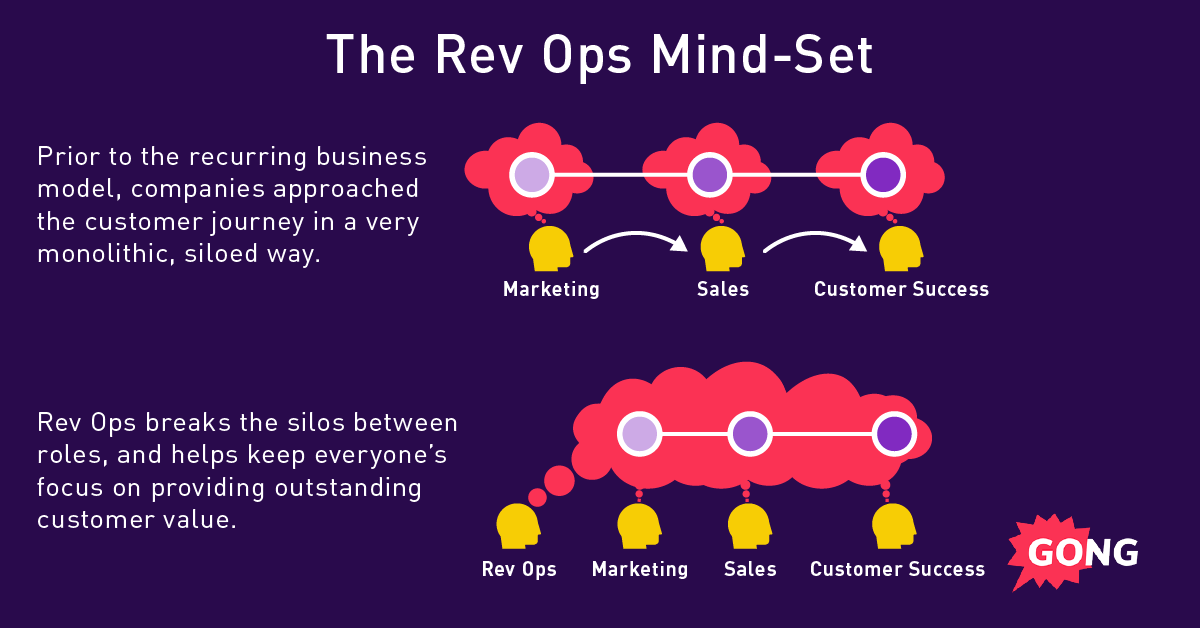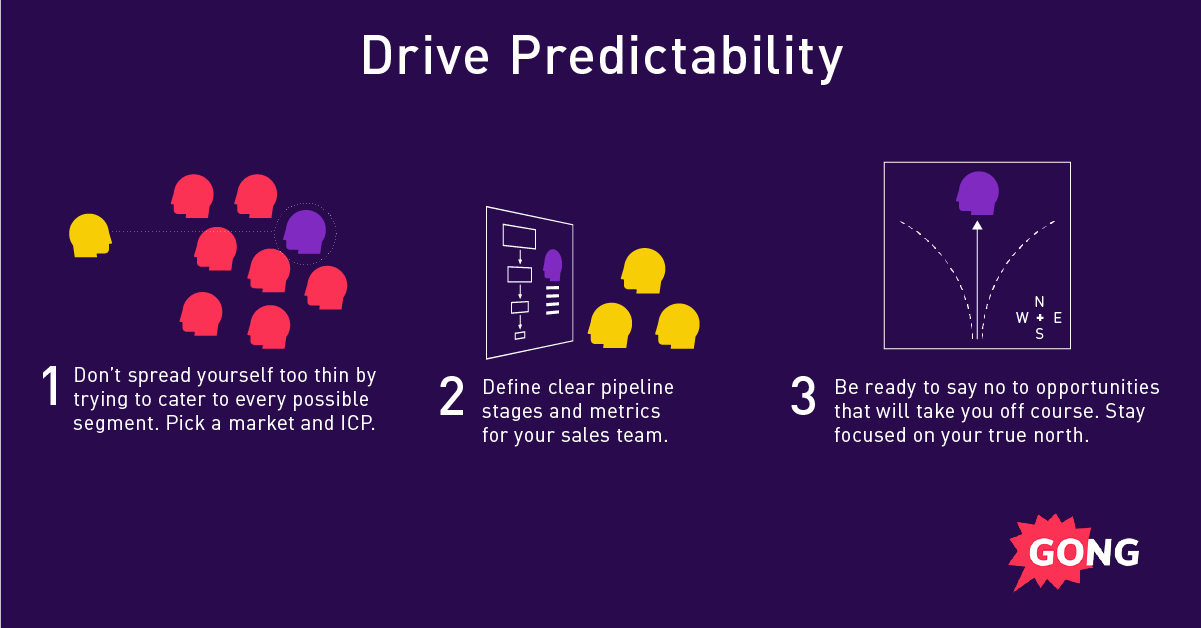Harish Mohan: Leading Through the Growth Curve
Why is predictability a critical factor, and what are the obstacles to achieving it?
What’s the role of a Rev Ops leader?
Why is empathy the key leadership skill for high-growth startups?
On a recent episode of the Reveal podcast, we connected with 10-year NetSuite veteran and VP of Global Revenue Operations at Pendo, Harish Mohan, for answers to these and other questions that are top of mind for revenue leaders.
Here are the key takeaways and highlights from that episode.
The Role of Rev Ops
I think Revenue Ops is twofold. Number one, it’s a new role but it’s also a new mentality. And what I mean by that is prior to the subscription, annuity, recurring business model taking off, businesses went to market in a very monolithic way.
You had various teams within the organization saying, “Look, my job is to figure out how to acquire customers.” Then hand it off to someone in another group that says, “My job is to figure out how to close a customer. My job is to figure out how to get the customer implemented and deliver value. And then my job is to continue to support the customer.”
And every or part of the organization ran on a separate P&L, and they were incented to. And the overall vision was hopefully that some of the parts become greater than the whole. That works when you don’t have to worry about things like lifetime value. When growth is really predicated on acquiring brand new units and squeezing as much as you can out of those brand new units.
I think the [difference] for me is the genesis of, “Now we really have to worry about customers being empowered and having more decisions. And providing the consistent value from when we first talk to them, to continually how we expand them.” Someone’s got to own that motion. Someone’s got to understand what the outcomes of the strategy are, and orchestrate all these different groups, and break the silos between all these different operational efficiencies that are being optimized within the silos, and make sure that we’re delivering amplified outcomes.
That’s the role I see Rev Ops going into. I think it’s more than a role. I think it’s a state of mind that any recurring revenue subscription business needs to embrace.

[Rev Ops is] driving these organizational projects that require everyone to separate from their silo and outline to a business model. And it requires a significant amount of executive sponsorship.
North Star Metrics
The kinds of things we’d look at from the very beginning is, “Okay, how are we differentiating ourselves in customer value? Are we doing a good job of that?” We would look at our overall ARR discount trends and see, “How do we stack up pricing and packaging from a competitive standpoint?” Being a services-driven implementation, we’d also look at, “Well, are we doing the right things across the lifecycle where we’re able to deliver customer value, but with a motion where we’re getting more recurring dollars out of each logo than services dollars? How do we create more effective services offerings?”
And in fact, even with NetSuite, we moved the entire services organization to be compensated and measured on ARR as the primary metric, rather than their P&L and billings. We moved them over to help drive this core metric and outcome.
We’d optimize our approach against a benchmark of metrics and had everyone then build their business model against these core set of outcomes so that at the end of the day, it’s plug and play…
Data Breakout: Focus on the Customer Experience
Harish says Rev Ops is all about understanding the outcomes of sales strategies and optimizing them across departments (that’s why Revenue Operations software is critical). This reflects a shift in focus away from sales process and towards the buyer’s journey, or in other words, switching the lens of optimization from “first call to close” and towards “first touch to renewal.” The former is specific to sales, while the latter encompasses all go-to-market teams involved in engaging, winning, and keeping customers.
And this approach is in direct response to the shift in buyer expectations, with 80% reporting they now expect a buying experience that closely resembles a B2C buying experience. In short, you need to make it easy and enjoyable for your clients to buy.
According to a Forrester study, customer experience leaders outperformed those lagging in CX on the S&P 500 index by nearly 80%. Additionally, their customers are seven times more likely to return to the company, eight times more likely to try other products or services offered, and 15 times more likely to spread positive word-of-mouth.
These stats are intriguing because they go beyond close rates, and start to touch on renewal rates, up-sell opportunity, and customer advocacy—all which help businesses grow their ARR. As you can see, putting the buyer’s journey at the forefront of your approach comes full circle and aids all aspects of GTM success.
Bet on Predictability
I think any company with Pendo’s growth curve is looking for the same thing—predictability. If you look at why investors put in the multiples they do, it’s to bet on predictability. Will you have a predictable growth model that provides a budget-consistent means for us to multiply the value that we’re seeing within your organization? I think that’s what we’re striving to do.
When I was asked when I came in and talked to the company about what am I here to do, it’s really two very, very simple things. I want to make it easier for us to acquire a customer. And I want to make it easier for us to expand a customer. And if we can do those two things in a predictable manner, we will outshine and differentiate—out hustle anybody else out there. And I think that’s really the core value a revenue operator can deliver in any particular organization.
Obstacles to Predictability
I’d say number one, not understanding the market and playing a very broad marketplace arena. You don’t know where you’re going to acquire your next customer, and building out a cohesive model from marketing all the way to your sales playbook on where you’re going to win, where you have defended value, where your next customer is going to come from. That volatility will kill you, right?
Is it corporate? Is it a commercial model? Is it enterprise? Is it verticals? Which persona am I selling to? If that’s too divergent, that’s going to create turbulence to start with. Because the seller’s going to come in and not know where to start. And it’s very hard for any marketing organization to build a brand demand model that tries to cater to every single go-to-market strategy that anyone could dream of. So having an identified true-win ICP is critical.
Number two, the enablement of your sales team in providing a consistent manner to build and execute pipeline—having the right stages defined that give you visibility—is key.
And number three is having the hygiene to say no. So if something takes you away or is divergent from your core vision, put it on pause, come back to it, but stay true to your true north. And make sure that you’re building out the motion most effectively against your single strategy.

I put myself through the common sense test. Is it worth getting the answer, or am I getting distracted? I think that’s a big part of any good, strong Rev Ops leader, is you have to have that ability to make the call. And I think that determination comes with experience a lot. It’s hard to make a data-driven decision about whether you should go look at data.
Leading with Empathy
Be empathetic. Especially if you’re working the growth curve of Gong and Pendo, you’re asking a lot from your sales organization and go-to-market organization. There’s a lot of learning. There’s a lot of anxiety. There’s a lot of uncertainty.
And your ability to be empathetic through that, and drive that change in the right way, is going to be critical. Lots of existing people and process and tools to help you manage through that change, but if you don’t have the empathy for your peak employees who drive it, you’re going to lose great human capital. And we’re still in a very competitive economy, right? People want to go where they think they’re heard and where they can win, and where they think they can make an impact. And as a sales leader, it’s up to you to create that environment.
If we do [sales] right, the outcome should be a win on all fronts.
Subscribe to Reveal: The Revenue Intelligence Podcast
Every week, we interview senior revenue professionals who share their insights on how they leverage revenue intelligence to drive success and win their market.
You’ll hear how modern go-to-market teams win, close revenue with critical deal insight, and execute their strategic initiatives—plus all the challenges that come along with it.
Listen now at gong.io/podcasts.
